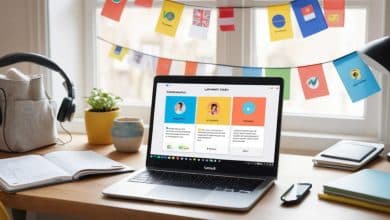Time-Saving Educational Resources for Busy Students
Balancing coursework, part-time jobs, and personal commitments can leave little room for studying. For busy students, optimizing every minute is essential. In this guide, you’ll discover time-saving educational resources—microlearning apps, adaptive platforms, concise video libraries, AI-powered assistants, and productivity tools—designed to deliver maximum learning in minimal time. Follow our step-by-step plan to streamline your study routine and reclaim your schedule.
“The best time-saving educational resources for busy students include microlearning apps like Quizlet and Brainscape, adaptive platforms such as Khan Academy, concise video libraries like CrashCourse, AI-powered study assistants, and curated flashcard decks—each designed to deliver maximum retention with minimal time investment.”
Why Time-Saving Resources Matter
When study windows are scarce, traditional methods—sifting through dense textbooks or attending lengthy lectures—can waste valuable time. Time-saving tools help students:
-
Maximize learning in short intervals: Bite-sized modules let you absorb concepts during commutes or breaks.
-
Reduce procrastination: Microlearning formats and quick wins keep momentum high.
-
Increase retention: Spaced repetition and active recall ensure knowledge sticks, even with limited review sessions.
-
Free up time: Efficient study sessions open space for part-time work, extracurriculars, or essential rest.
Categories of Time-Saving Educational Tools
Microlearning & Flashcards
-
Quizlet: Offers pre-made and customizable flashcard decks, plus “Learn” mode that uses spaced repetition to target weak areas.
-
Brainscape: Adaptive flashcards optimize review intervals based on your confidence level, helping you retain vocabulary or formulas faster.
Adaptive Learning Platforms
-
Khan Academy: Personalized skill recommendations diagnose strengths and weaknesses, targeting lessons where you need the most practice.
-
Coursera’s Guided Projects: One- to two-hour, hands-on modules let you acquire job-ready skills in bite-sized chunks without committing to a full course.
Video Lecture Libraries
-
CrashCourse (YouTube): Animated, 10–15 minute videos cover core subjects—history, biology, literature—focusing on key concepts rather than exhaustive detail.
-
TED-Ed: Short, engaging lessons with quizzes embedded, allowing immediate assessment of your understanding.
AI-Powered Study Assistants
-
ChatGPT: Generate quick summaries of lengthy texts, create practice questions, or clarify complex concepts in seconds, bypassing hours of manual research.
-
Socratic by Google: Use your smartphone camera to snap homework questions and get step-by-step solutions, speeding up problem-solving.
Productivity & Note-Taking Apps
-
Notion Templates for Students: Pre-built study schedules, lecture note databases, and assignment trackers help you organize coursework without starting from scratch.
-
Evernote: Save web articles, PDFs, and lecture slides using the web clipper; tag and search notes instantly to find information in seconds.
Time-Management Tools
-
Pomodoro Apps (Be Focused, Focus To-Do): Break study sessions into 25-minute intervals with 5-minute breaks, maintaining focus and preventing burnout.
-
MyStudyLife: A dashboard that combines tasks, classes, and exam reminders, helping you visualize weekly commitments and deadlines in one place.
Concise Exam Prep Sites
-
SparkNotes: Summaries of literature, history, and science topics highlight essential themes, characters, and facts—ideal for last-minute reviews.
-
CliffsNotes QuickReview: Chapter-by-chapter outlines and key takeaways for textbooks, saving you from rereading entire volumes.
Traditional vs. Time-Saving Methods
| Feature | Traditional Method | Time-Saving Alternative |
|---|---|---|
| Content Length | Full-length textbook chapters (30–50 pages) | Micro-lesson videos (10–15 minutes) |
| Study Mode | Passive reading and note-taking | Active recall with flashcards and quizzes |
| Customization | One-size-fits-all lectures | Personalized learning paths via adaptive platforms |
| Time Investment | 2–3 hours per topic | 15–30 minutes per micro-module |
| Review Frequency | Irregular review sessions | Spaced-repetition algorithms for optimal retention |
| Support & Feedback | Scheduled office hours or tutor sessions | 24/7 AI-driven assistance (e.g., ChatGPT, Socratic) |
Pros & Cons
-
Traditional Methods
-
Pros: In-depth coverage, established curricula.
-
Cons: Time-consuming, less adaptive, higher risk of procrastination.
-
-
Time-Saving Tools
-
Pros: High efficiency, on-demand support, personalized pacing.
-
Cons: May offer surface-level coverage; requires disciplined scheduling to avoid skipping deeper study when needed.
-
How Busy Students Gained Efficiency
College Sophomore Balances Work and Courses
-
Challenge: Working 20 hours per week while maintaining a 3.5 GPA.
-
Resources Used:
-
Quizlet’s shared flashcard decks for Organic Chemistry terminology.
-
CrashCourse videos to review U.S. History in half the time of textbook chapters.
-
Pomodoro App to structure laptop-based study blocks.
-
-
Outcome: Exam scores improved by 20% in two subjects, and the student reclaimed five extra hours per week for work and campus activities.
Grad Student Accelerates Research Preparation
-
Challenge: Preparing a literature review for a thesis with limited daytime hours.
-
Resources Used:
-
ChatGPT to generate concise summaries of journal articles and format citations.
-
Notion to organize research notes using an “Academic Paper” template.
-
Khan Academy micro-lessons to refresh statistical methods relevant to data analysis.
-
-
Outcome: Completed the literature review draft two weeks ahead of schedule and achieved higher accuracy in statistical calculations, leading to earlier submission.
Building a Time-Efficient Study Plan
-
Assess Available Study Windows
-
Map out weekly commitments—classes, part-time work, extracurriculars—then identify 30–45 minute “pocket” study periods (e.g., during commutes, between lectures).
-
-
Select Complementary Tools by Category
-
Flashcards: Use Quizlet during short breaks to reinforce vocabulary or formulas.
-
Adaptive Platform: Spend 20 minutes each evening on Khan Academy to target weak points quickly.
-
Micro-Lecture: Watch a CrashCourse video on your lunch break instead of reading an entire chapter.
-
AI Assistance: Use ChatGPT to draft article summaries or solve a problem when stuck, saving minutes on manual research.
-
Note-Taking/Productivity: Import lecture materials into Notion, tag them by topic, and clip relevant online articles for quick reference.
-
-
Create a Weekly Calendar Template
-
Monday & Wednesday:
-
25-minute Pomodoro sessions with Quizlet flashcards.
-
15 minutes on Khan Academy adaptive practice.
-
-
Tuesday & Thursday:
-
10 minutes generating a summary via ChatGPT for last lecture.
-
20 minutes watching a CrashCourse video on related subject matter.
-
-
Friday:
-
30 minutes organizing notes in Notion—compile key takeaways and set tasks for the following week.
-
20-minute flashcard review session.
-
-
Weekend Checkpoint:
-
One 45-minute Pomodoro block synthesizing weekly learnings; update progress metrics in Notion.
-
-
-
Track Progress with Simple Metrics
-
Micro-Module Completion: Log the number of flashcard decks, adaptive lessons, and videos finished each week—aim for 10–15 modules total.
-
Performance Improvement: Compare quiz and assignment results before and after adopting time-saving tools; target a 10–15% increase in scores.
-
Time-on-Task Efficiency: Monitor average time to master a concept via traditional study versus microlearning; strive for a 30–40% reduction in study time.
-
-
Iterate Monthly
-
Review which tools yielded the biggest efficiency gains—e.g., “Khan Academy reduced math review time by 30%.”
-
Adjust your schedule: shift underperforming tools to less-critical slots, or replace them with alternatives (e.g., switch from Socratic to ChatGPT for better explanations).
-
Set new micro-goals based on upcoming assessments or project deadlines.
-
Metrics to Monitor Success
-
Micro-Module Completion Rate:
-
Track total modules (flashcards, adaptive exercises, videos) finished weekly; aim for 10–15 microlessons per week.
-
-
Performance Improvement:
-
Compare quiz and assignment scores before and after implementing tools; target a ≥10% accuracy boost.
-
-
Time-on-Task Efficiency:
-
Measure time to master a concept via traditional study vs. microlearning; seek a 30–40% reduction.
-
-
Study Consistency:
-
Log the number of “pocket” sessions used vs. planned; strive for 80% utilization of identified study windows.
-
-
Engagement & Satisfaction:
-
Conduct a self-survey each month: “Rate your confidence on a scale of 1–5.” Aim for an average of 4+.
-
FAQs
What are the best microlearning apps for quick vocabulary review?
Answer:
Quizlet and Brainscape lead the pack. Both offer community-created decks and utilize spaced-repetition algorithms, ensuring you review words precisely when you’re about to forget them, making short study bursts highly effective.
How can ChatGPT save time when preparing for exams?
ChatGPT can instantly generate concise summaries of lengthy texts, craft targeted practice questions, and clarify complex theories—eliminating hours spent searching through multiple sources and reorganizing information manually.
Are micro-lecture videos as effective as traditional lectures?
Research indicates that 10–15 minute focused videos (like those on CrashCourse) can match the learning gains of hour-long lectures by reducing cognitive overload and maintaining high engagement, especially when paired with active recall tools such as flashcards.
Can I use these tools without falling behind on depth of learning?
Yes. Time-saving resources work best when blended with in-depth study for complex subjects. Use adaptive platforms to pinpoint gaps, then allocate longer sessions for deep dives into challenging topics while relying on microlearning for review and reinforcement.
How do I maintain discipline with short study bursts?
Employ Pomodoro apps (e.g., Be Focused, Focus To-Do) to enforce strict 25-minute work intervals and 5-minute breaks. Set clear micro-goals (e.g., “Complete 25 flashcards”), track achievements in an app or spreadsheet, and reward yourself when you hit milestones.
Conclusion
For busy students, every minute matters. Incorporating time-saving educational resources—from microlearning apps and adaptive platforms to concise video libraries, AI assistants, and productivity tools—can transform how you study. By following the step-by-step plan, tracking clear metrics, and iterating monthly, you’ll study more efficiently, improve retention, and free up precious time for work, family, and rest. Start integrating these resources today and watch your productivity—and grades—soar.
Published on: 4 de June de 2025








